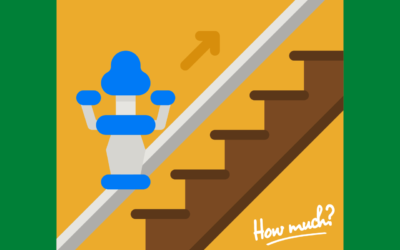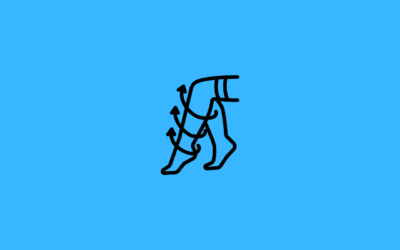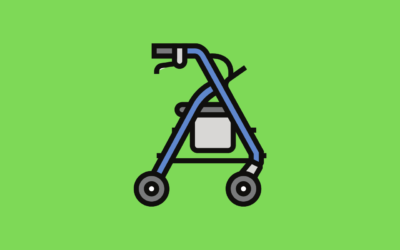Quick Answers
Some Causes of Poor Circulation: Peripheral Artery Disease (PAD), Diabetes, Blood Clots, Atherosclerosis, Obesity, Prolonged Sitting or Standing
Some Early Signs of Poor Circulation: Cold Feet Numbness or Tingling Swelling, Discolouration Foot Sores or Ulcers Weak, Pulse Slow Hair and Nail Growth, Muscle Cramps and Fatigue, Pain or Discomfort Slow Healing
Preventing and Improving Circulation: Stay Physically Active, Elevate Your Feet, Compression Stockings, Maintain a Healthy Weight, Stay Hydrated, Quit Smoking, Manage Chronic Conditions, Massage and Stretching, Avoid Tight Footwear, Warm Up Cold Feet
Proper circulation in your feet is crucial for overall health and comfort. When circulation is compromised, it can lead to various issues and discomfort. In this article, we’ll delve into some common questions and answers related to foot circulation to help you better understand this vital aspect of your well-being.
What Causes Poor Circulation in the Feet?
Poor circulation in the feet can be attributed to several factors, including:
- Peripheral Artery Disease (PAD): A condition where blood flow to the extremities is reduced due to narrowed arteries.
- Diabetes: High blood sugar levels can damage blood vessels, affecting circulation.
- Blood Clots: Clots can block blood flow to the feet, leading to poor circulation.
- Atherosclerosis: A buildup of plaque in the arteries can restrict blood flow.
- Obesity: Excess body weight can strain the circulatory system.
- Prolonged Sitting or Standing: Remaining in one position for too long can impede blood flow.
What Are the Early Signs of Poor Circulation in the Feet?
Recognising early signs of poor circulation is essential for prompt intervention. Look out for these symptoms:
- Cold Feet: Persistent coldness, even in warm conditions, can indicate reduced blood flow.
- Numbness or Tingling: Sensations of numbness or tingling can result from insufficient blood supply to the nerves.
- Swelling: Poor circulation can lead to fluid buildup and swelling in the feet, ankles, or lower legs.
- Discolouration: Skin colour changes, such as paleness or bluish tint, may signify decreased oxygen supply.
- Foot Sores or Ulcers: In severe cases, poor circulation can hinder wound healing, leading to sores or ulcers.
- Weak Pulse: A weak or absent pulse in the feet is a clear indicator of compromised circulation.
- Slow Hair and Nail Growth: Reduced blood flow can affect the growth and health of hair and nails on the feet.
- Muscle Cramps and Fatigue: Poor circulation can lead to muscle cramps and fatigue, particularly during physical activity.
- Pain or Discomfort: Persistent pain or discomfort in the feet, incredibly when inactive, may point to circulation issues.
- Slow Healing: Cuts, bruises, or wounds on the feet that take an unusually long to heal can indicate poor circulation.
Can Poor Circulation in the Feet Be Prevented?
Yes, there are steps you can take to prevent or improve poor circulation:
- Stay Physically Active: Regular exercise, such as walking or swimming, enhances overall circulation.
- Elevate Your Feet: Elevating your feet above heart level can reduce swelling and boost circulation.
- Compression Stockings: These garments provide gentle pressure to aid blood flow.
- Maintain a Healthy Weight: Excess weight can strain circulation; maintaining a healthy weight is beneficial.
- Stay Hydrated: Proper hydration helps maintain blood volume and supports circulation.
- Quit Smoking: Smoking constricts blood vessels and negatively impacts circulation.
- Manage Chronic Conditions: Conditions like diabetes and high blood pressure should be managed to improve circulation.
- Massage and Stretching: Regular foot massages and gentle stretches can promote blood flow.
- Avoid Tight Footwear: Comfortable, well-fitting shoes are crucial to prevent constriction of blood vessels.
- Warm Up Cold Feet: Warm baths or heating pads can stimulate blood flow.
When Should I Seek Medical Attention for Poor Foot Circulation?
If you experience severe or persistent symptoms, seek medical attention promptly. This includes sudden numbness, weakness, foot pain, or non-healing wounds or ulcers. These could indicate a more serious underlying issue.
Is Poor Circulation Reversible?
The reversibility of poor circulation depends on its underlying cause. Lifestyle changes, medications, and therapies can significantly improve circulation. However, for advanced conditions like severe PAD, treatment options and potential limitations should be discussed with a healthcare provider.
Remember that these answers provide general information. For personalised advice or concerns about foot circulation, consult a healthcare provider for a comprehensive evaluation and tailored guidance.



![LOZLTX Upgrade Foot Massagers for Pain and Circulation [Highly Efficient Blood Energy-20 Minute Recovery] EMS Foot Massager [Multiple Massage Options-8 Functions 32 Intensities]](https://m.media-amazon.com/images/I/5188eB4LloL._SL160_.jpg)








